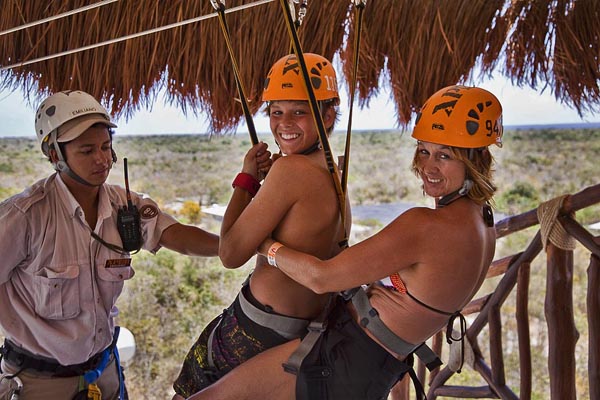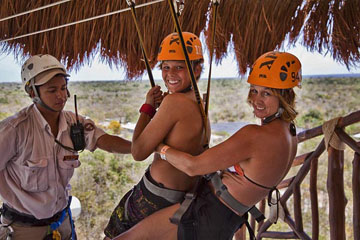
All photos by Dave Shultz
“DID YOU DRINK A LOT of tequila last night?” The man checking my harness asks. I’m about to zipline into a cave cenote and I’m giddy with anticipation.
“The mosquitoes here,” he continues, “they love the tequila.” I’m spotted like a leopard and doing my best impersonation of a person who doesn’t want to rub her entire body with a cactus.



